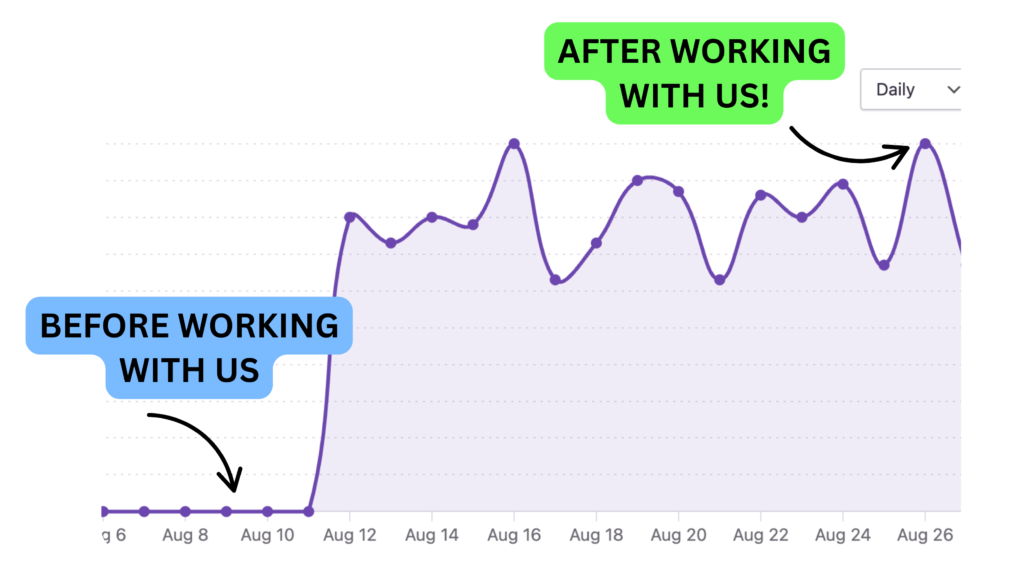As we move into the new year, more ecommerce trends for 2024 emerge, reflecting new technological advancements and shifting consumer behaviors. Staying ahead of these trends is crucial for any business looking to thrive in the digital marketplace.
From the integration of cutting-edge technologies to a stronger focus on sustainability and customer-centric approaches, these trends are reshaping the way businesses operate and interact with their customers online.
These are the top ecommerce trends for 2024, providing a glimpse into the future of online retail.
Ecommerce Trends for 2024
Here’s a quick overview of the key ecommerce trends for 2024. These trends are shaping how customers shop and what they expect from online businesses.
1. Subscription Based Ecommerce
Subscription models are becoming more popular in ecommerce. This trend involves customers signing up for regular deliveries of products. It’s not just for books or food anymore. Now, almost any product can be offered as a subscription, like cosmetics or home goods.
This model guarantees steady revenue for businesses and convenience for customers. It’s especially appealing because it builds customer loyalty and provides predictable sales patterns.
2. Voice Commerce Growth
Voice commerce is shopping using voice commands with smart devices. In 2024, it’s expected to grow significantly. Customers enjoy the convenience of shopping by speaking to devices like Amazon Echo or Google Home.
This trend is about making shopping easier and more accessible. Businesses need to optimize their websites for voice search and ensure their products can be easily found and purchased through voice commands.
3. Augmented Reality Product Visualization
Augmented reality allows customers to see products in a real-world environment before buying. For example, customers can see how a sofa looks in their living room or how a pair of glasses fits their face.
This technology enhances the online shopping experience by reducing uncertainty and increasing customer satisfaction. It’s a game-changer for businesses selling products where size, fit, or style is important.
4. Mobile-First Shopping
More and more customers prefer shopping on their mobile devices over desktop devices. More specifically, 75% of users prefer using mobile devices, whereas 15% favor desktop use.
In 2024, having a mobile-friendly online store is a necessity. This means your website should be easy to navigate on a phone and the checkout process should be simple.
Mobile-first shopping is about providing a seamless experience for customers who prefer to shop on their smartphones.
5. Sustainability Transparency
Customers are increasingly concerned about sustainability. In 2024, it’s important to be transparent about your business’s sustainability practices.
This includes showing how your products are sourced, your company’s carbon footprint, and specific actions taken to reduce environmental impact.
Share details about renewable energy use or ethical sourcing to connect with eco-conscious customers. Transparency in these areas can significantly boost brand loyalty and customer trust.
6. Direct-to-Consumer (DTC) Brands
DTC brands sell directly to customers, cutting out any middlemen. This growing trend allows brands to build closer relationships with their customers through direct engagement and feedback.
It also gives businesses more control over their product quality, pricing, and brand experience. For customers, DTC brands often offer unique products, better prices, and a more personalized shopping experience.
By leveraging social media and online marketing, DTC brands are redefining consumer relationships.
7. More Payment Options
Offering a variety of payment options is essential in 2024. This includes modern options like Apple Pay, cryptocurrency, and localized payment methods that cater to international customers.
Providing these diverse options caters to customer preferences for convenience and security. Having multiple payment solutions can reduce cart abandonment rates, enhance global accessibility, and improve overall customer satisfaction.
It’s crucial to integrate these payment systems seamlessly into the shopping experience to accommodate the diverse financial habits of your customers.
8. Conversational Commerce
Conversational commerce refers to the use of chatbots, messaging apps, and AI assistants to interact with customers. In 2024, this trend is about providing a more personalized and engaging shopping experience.
Businesses are using these tools for customer service, product recommendations, and even completing sales.
This approach makes shopping more interactive and convenient, as customers can get assistance and make purchases directly through chat interfaces.
It’s important for businesses to integrate conversational commerce into their online platforms to meet customer expectations for fast, responsive, and personalized interactions.
9. Conversion-Centric Website Optimization
Conversion-centric website optimization is all about designing your online store to increase sales. In 2024, this involves using data analytics to understand customer behavior and preferences.
The goal is to create a user-friendly experience that guides customers smoothly from landing on your site to completing a purchase. This includes optimized product pages, streamlined checkout processes, and personalized product recommendations.
Effective use of call-to-action buttons and simplifying navigation are also key. Businesses focusing on conversion optimization are likely to see higher engagement and increased sales.
10. Green Packaging Innovation
Green packaging innovation is an emerging trend focusing on environmentally friendly packaging solutions. In 2024, businesses are moving away from traditional plastics to materials that are biodegradable, recyclable, or made from sustainable sources.
This trend is not just about using green materials; it’s also about minimizing packaging waste and optimizing package design for efficiency and sustainability.
Businesses adopting green packaging are not only helping the environment but also appealing to eco-conscious consumers who prefer to support brands with green practices.
11. ROPO and BOPIS
ROPO (Research Online, Purchase Offline) and BOPIS (Buy Online, Pick-up In-Store) are significant trends in 2024. ROPO involves customers researching products online before buying them in a physical store.
BOPIS, on the other hand, allows customers to purchase items online and pick them up at a nearby store. Both trends highlight the blending of online and offline shopping experiences.
They offer convenience and flexibility, as customers can research at their own pace online and then quickly obtain their products either in-store or through a local pick-up point.
12. Growth of Online Marketplaces
The growth of online marketplaces is a key trend in 2024. Platforms like Amazon, eBay, and Etsy are becoming more dominant, offering businesses a vast audience.
These marketplaces simplify the buying process for customers and provide businesses with an established platform to sell their products.
For businesses, selling on these marketplaces means access to advanced logistics, payment processing, and customer reach. However, competition is fierce, and businesses need to focus on differentiation and customer service to stand out.
13. Increase in Online Advertising
There’s a significant increase in online advertising. With more businesses moving online, the competition for visibility is intense.
This trend involves using various online advertising methods, such as social media ads, search engine marketing, and display ads, to reach potential customers. The key is to create targeted and engaging ads that resonate with your audience.
Businesses are also leveraging data analytics to understand customer behavior and preferences, allowing for more effective and personalized advertising campaigns.
The increase in online advertising requires a strategic approach to stand out and attract customers.
How is Ecommerce Changing in 2023?
Ecommerce in 2023 is undergoing a dynamic transformation. Key trends include the adoption of artificial intelligence (AI) and data analytics to offer highly personalized shopping experiences.
This shift towards customization is changing how consumers interact with online platforms. Another significant development is the increased use of augmented reality for a more realistic product visualization, enhancing customer decision-making.
Moreover, the growth of mobile commerce indicates a shift in shopping patterns towards smartphones.
Sustainability and ethical business practices are also emerging as vital considerations for consumers, signaling a move towards more conscious online shopping.
What Percentage of Sales Come From Ecommerce?
As of 2023, ecommerce accounts for a significant portion of global retail sales. While the exact percentage varies by region, it’s estimated that around 20% of retail sales worldwide are conducted through ecommerce platforms.
This number has been steadily increasing over the years, reflecting a shift in consumer behavior towards online shopping.
The growth is driven by factors like convenience, the rise of mobile shopping, and the expanding reach of online marketplaces.
Still Wondering How to Grow Your Ecommerce?
To successfully grow your ecommerce business, staying ahead of ecommerce trends for 2024 and understanding your audience is key. If you’re looking for tailored advice, EtherealMinds offers a free first-time consultation.
We’ll examine your ecommerce and online presence, providing insights and strategies to help you thrive. Our expertise can guide you in adapting to the evolving digital landscape and enhancing your business growth.









